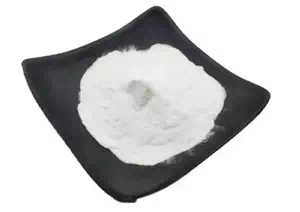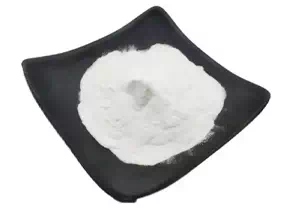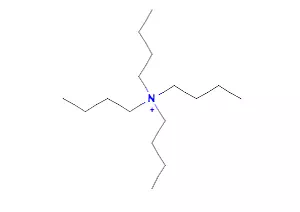All Categories



tetrabutylammonium bromide CAS 1643-19-2, tetrabutylammonium bromide, CAS 1643-19-2
Tetrabutylammonium bromide, as an important ion-pairing reagent and an efficient phase transfer catalyst, holds a pivotal position in the field of chemical engineering.
CAS : 1643-19-2 / 10549-76-5
Formula : C16H36BrN
Mol. wt. : 322.37
EINECS : 216-699-2
Chemical Name: | Tetrabutylammonium Bromide |
Other Name: | Tetra ammonium bromide; Tetrabutyl ammonium bromide |
CAS: | 1643-19-2 / 10549-76-5 |
EINECS: | 216-699-2 |
Type: | Pharmaceutical raw materials; organic raw materials |
Molecular Formula: | C16H36BrN |
Molecular Weight: | 322.37 |

Tetrabutylammonium bromide, as an important ion-pairing reagent and an efficient phase transfer catalyst, holds a pivotal position in the field of chemical engineering. It is not only a common chemical product widely circulated in the market, but also, due to its unique chemical properties and wide application range, has become an indispensable key substance in many chemical reactions.
Tetrabutylammonium bromide plays a crucial role in the preparation of salt double decay reactions, especially for the synthesis of other tetrabutylammonium salts. This anhydrous white solid, with its stable chemical structure and good reactivity, provides a reliable guarantee for the synthesis process.
In the field of organic chemistry, the application of tetrabutylammonium bromide as a phase transfer catalyst is particularly prominent. It not only participates in the synthesis process of pharmaceutical intermediates such as phenyltriethylammonium chloride, ethyl cinnamate, and pseudoionic ketones, but also promotes the efficient preparation of these compounds through its unique catalytic effect. These pharmaceutical intermediates can be transformed into therapeutic drug molecules in further synthetic steps, making contributions to the cause of human health.
It is worth mentioning that tetrabutylammonium bromide also plays a significant role in the synthesis of the anti-infective drug bamcillin. Through its precise catalytic effect, it can ensure the smooth progress of the drug synthesis process and improve the purity and yield of the drug. In addition, in the synthesis of organic drugs such as sutacillin and sutacillin, tetrabutylammonium bromide also participates as a catalyst, demonstrating its wide applicability and outstanding catalytic performance.
More strikingly, tetrabutylammonium bromide also plays a key role in the synthesis of the anti-diabetic drug dapagliflozin. This drug has a new mechanism of action, offering more treatment options for diabetic patients. Tetrabutylammonium bromide, as a catalyst, ensures the correct configuration and high purity of drug molecules in this complex and delicate synthesis process, safeguarding the health of diabetic patients.
Tetrabutylammonium bromide is a compound that has wide applications in the field of chemistry. As a phase transfer catalyst, it can effectively promote the interaction between reactants and enhance the efficiency and yield of chemical reactions. Meanwhile, it is also an important component of polarographic analysis reagents and ion-pair chromatography reagents, providing strong support for research in related fields.
Tetrabutylammonium bromide plays an important role in the synthesis process of drugs such as bamoxicillin and sutaloxicillin. Through their unique catalytic mechanisms, the synthesis of these drugs has become more efficient and controllable. In addition, tetra-butylammonium bromide is also used in the synthesis of other chemicals such as 3-phenylacrolein and benzyl cinnamate, further expanding its application scope.
It is worth mentioning that tetrabutylammonium bromide can also be used for the electrochemical bromination of aromatic compounds. This process not only enhances the chemical properties of aromatic compounds, but also provides more options for organic synthesis.
Using tetrabutylammonium bromide as the raw material, various cationic salts of tetrabutylammonium bromide can be prepared through the double disintegration reaction of salts. These cationic salts have extensive application value in chemical research and provide powerful tools for scientists to explore new chemical reactions and synthetic pathways.
Overall, tetrabutylammonium bromide plays a crucial role in the field of chemistry due to its outstanding performance and broad application prospects.

Melting point | 102-106 °C(lit.) |
Boiling point | 102 °C |
density | 1.039 g/mL at 25 °C |
refractive index | n20/D 1.422 |
Fp | 100℃ |
storage temp. | Store below +30°C. |
solubility | H2O: 0.1 g/mL, clear, colorless |
form | Crystalline Powder |
color | White to slightly cream |
Specific Gravity | 1.007 |
Odor | Amine like |
Water Solubility | 600 g/L (20 ºC) |
Stability: | Stable. Incompatible with strong oxidizing agents. Protect from moisture. |
* Prompt reply and 24 hours online, professional team to provide best price and high quality product.
* Sample testing support.
* Every batch of products will be tested to ensureits quality.
*The packing also can be according the customers` requirment.
*Any inquiries will be replied within 24 hours.
*we provide Commerical Invoice, Packing List, Bill of loading, COA , Health certificate and Origin certificate. If your markets have any special requirements, let us know.